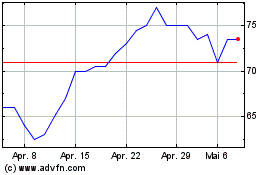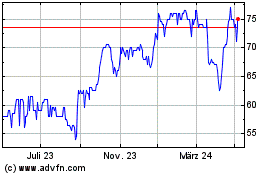Campine year results 2020: 2020: Resilience in the 2nd year-half
As most manufacturing companies,
Campine did not escape the impact of the worldwide
Corona pandemic in 2020. By focusing on essential activities,
seizing some alternative sales opportunities and a good performance
in the 2nd year-half, Campine was able to close the year with a
moderate result. The pandemic had its main negative influence in
the first semester.
The demand in the Specialty
Chemicals division started declining as from April
onwards. In the 2nd quarter, we realised 25% less sales volumes
compared to a normal year. This made us decide to close the
department during the month of May. We were however successful to
compensate the volume loss completely in the 2nd semester. The main
financial impact in this division was the dramatic price reduction
for antimony products. The price of antimony metal reached a low of
5,000 $/ton in the summer as a result of a worldwide collapse in
demand. Towards yearend, we experienced an opposite evolution.
Related to continued infection issues in mines, stocks of antimony
ores, concentrates and metal started to get depleted resulting in a
fierce price uptake (see further in perspectives 2021).
The drop in demand in the Metals
Recycling division already occurred in March. Campine’s
lead alloys are mainly used for the manufacturing of car batteries,
but as the automotive industry closed down many assembly lines,
demand dropped by 50%. We were able to compensate a part of the
lowered industrial volumes by selling to metal traders. However,
during April the availability of scrap batteries became an issue as
many partners in this supply chain also had to close their doors.
We decided therefore mid-May to close our factory for 5 weeks,
during which we performed an advanced yearly maintenance. By that
time lead LME prices had declined to a low beneath € 1,500/ton.
From June onwards, the scrap battery supply chain started to
rebuild and the demand for lead slowly resumed to normal levels.
Lead LME prices started to recover and the 2nd half of the year
came off as relatively normal.
The implementation of measures to prevent the
Corona virus to spread had a severe impact on the way we used to
work and collaborate. Campine combined (and continues to use) a
wide variety of measures, such as working from home and the remote
management of customer relations, whilst continuing manufacturing
on its site in Beerse. Seen the use of hazardous materials and our
Seveso status, our employees are used to wear protective gear,
including dust masks and even full facemasks. The implementation of
additional measures related to Corona was therefore only a small
step to take.
Only a very limited number of employees got
infected with Covid-19. The contact tracing indicated however that
none of the infections occurred during their professional
activities on Campine’s premises. A proof that all preventive
measures implemented by the company were very effective.
Several investments were delayed or spread in
time, mainly because subcontractors, just like foreign suppliers of
equipment and machinery, experienced problems due to the pandemic.
Strict operational cost control was implemented throughout all
processes in all departments. A total of € 2.3 mio in expenses was
saved, amongst others by provisional closing of some departments,
using temporary unemployment for all employees, cutting marketing
expenses, reduced travel and external meetings, etc.
Financial results
Revenue
Campine realised a total revenue of € 166.9 mio
in comparison with € 192.5 mio in 2019 (-13%). This lower revenue
is mainly related to the reduced metal prices, which form the basis
of Campine sales prices and the somewhat lower sales volumes in the
Division Metals recycling.
Results
The EBITDA reached € 7.2 mio, which is 23% lower
compared to the € 9.4 mio of 2019 (excluding the € 3.9 mio refund
of the EC fine) and the EBIT ended at € 3.6 mio (37% lower than in
2019). The Net Result (EAT) for 2020 amounted to € 2.8 mio compared
to € 4.1 mio (excluding the € 3.9 mio refund of the EC fine) in
2019 (-33%).
Solvency
Our financial ratios continued to remain very
solid during 2020. With a solvency rate of 55% (equity/balance
sheet total) we have the financial resources to continue financing
our investment program.
Dividend
The board proposes to pay a dividend amounting
to € 0.975 mio based on the 2020 results. The pay out of € 0.65
gross per share is planned for June 11th 2021.
Results per Division
Metals Recycling – sales €
113.1 mio (-12%) – EBITDA € 4.8 mio (-43%)
This Division is composed of the Business Units
Lead and Metals Recovery.
We concluded the year with a sales volume of
approx. 62,600 ton, a decrease with 3% compared to 2019.
Revenue and operational result both strongly
depend on the metal prices, mainly on the lead LME price. Our
margins are under pressure when LME has a downward trend and
margins recover during upward movements. Just like all other base
and minor metals, the lead LME price decreased substantially during
the onset of the Corona pandemic. In mid-January we still enjoyed a
lead LME price level of around € 1,750/ton, but by May the price
level was already down below € 1,500/ton. After this, the lead
price started to recover to similar levels as at the start of the
year (with exception of a dip during October). The average LME
price in 2020 was about € 1,600/ton, which is about 10% lower than
in 2019.
Consequently, the revenue decreased by 12% to €
113.1 mio whereas the EBITDA lowered to € 4.8 mio (-43%) and
the EBIT reached € 2.6 mio (-57%).
Specialty Chemicals – sales €
64.6 mio (-16%) – EBITDA € 2.3 mio (+ 168%)
This division is composed of the Business Units
Antimony and Plastics.
Despite the Corona pandemic, the sales volume of
13,350 tons in the Specialty Chemicals division remained almost
equal with the 13,600 ton of the previous year 2019.
Revenue is linked to the evolution of antimony
metal prices. The average Antimony Metal Bulletin price of $
5,912/ton in 2020 was considerably lower than the average price in
2019, amounting to $ 6,722/ton. This is a decrease of 12%.
Additionally the Dollar-Euro exchange rate of 1.142 $/€ was also
lower than in 2019 (1.119 $/€). Consequently our revenue amounted
only to € 64.6 mio (‑16% vs 2019).
Notwithstanding the drastic price reduction of
antimony products, the results improved considerably: the EBITDA
reached € 2.3 mio, up from € 0.9 mio one year earlier. The EBIT
increased to € 1.1 mio compared to a loss of € –0.2 mio in 2019.
Reasons for this progress are partially related to structural
operational improvements, optimizations in purchasing and the
evolution of our sales portfolio towards more value added
products.
Perspectives for 2021
Predicting what influence the Corona pandemic
will continue to have on the business in 2021 is quite difficult.
Especially the impact on metal prices, which are crucial for
Campine’s financial performance. The price for antimony metal has
been slowly increasing since the fall of last year. The fear for
shortages on the supply side (antimony ore and concentrates) at the
start of this year, induced an explosion of the price, which
increased with 50% in less than 2 months’ time. Availability of
antimony metal and derivatives like antimony trioxide remain
scarce. For lead, the LME price remained relatively stable in 2021
so far.
Demand for products from our Specialty Chemicals
division is quite high in the first quarter of 2021. The general
recovery of the economy leads to a replenishment of stocks, which
is even further supported by the increasing prices and potential
shortages. We expect this situation to persist until the
summer.
In our Metals Recycling Division demand is
normal for the time of the year. The availability of scrap
batteries is good, supported by the lockdown measures, which
grounded many vehicles throughout the winter, causing batteries to
fail. We predict a normal continuation of the year at this
point.
In the first week of January, Campine was
granted a government subsidy of 1 mio euro for the investment in a
novel process for the recycling of antimony. This innovative
technology has meanwhile been started on an industrial scale and
the investment (totalling € 4.9 mio) will already contribute to
Campine’s result in 2021.
Some other large investments will be carried out
during 2021, but these are mostly replacement investments. Amongst
others, Campine will renew its power supply facilities and build a
new lead casting line, in which the refined lead is poured into
ingots. We expect some higher efficiencies and a small capacity
increase in our refinery. The construction of the PP plastics
recycling plant has been shifted into 2022.
EBITDA: Earnings before interests, taxes, depreciation and
amortisationEBIT: Earnings before interests and taxes also referred
to as Operating resultEAT: Earnings after tax also referred to as
Result for the year
Our auditor, Deloitte Bedrijfsrevisoren, represented by Luc Van
Coppenolle, has confirmed that the audit procedures of the
consolidated financial statements are substantially completed and
that these procedures have not revealed any material modification
that would have to be made to the accounting information, derived
from the consolidated financial statements and included in this
communiqué.
The annual financial report will be made
available for the public on April 23rd 2021 on the website of
Campine.
For further information you can contact Karin
Leysen: tel. +32 14 60 15 49 / email: Karin.Leysen@campine.com
Campine NV (EU:CAMB)
Historical Stock Chart
Von Mär 2024 bis Apr 2024

Campine NV (EU:CAMB)
Historical Stock Chart
Von Apr 2023 bis Apr 2024
